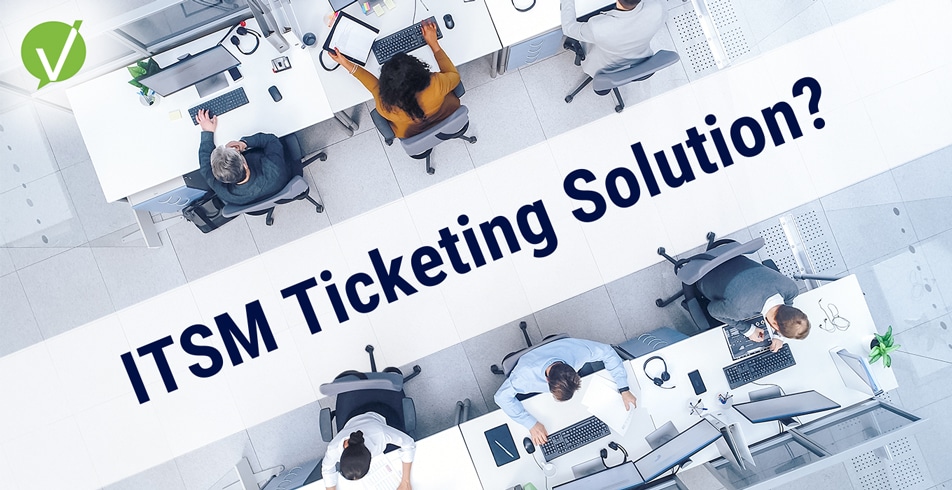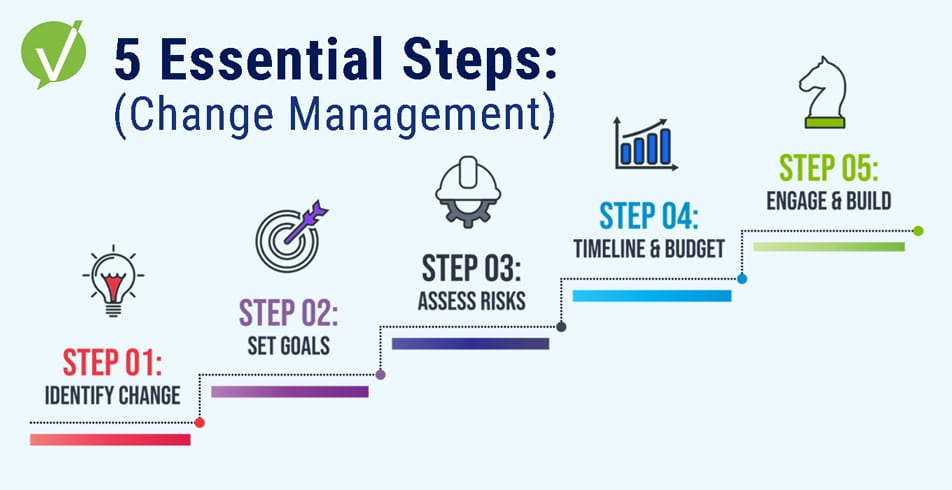What is an ITSM Ticketing Solution: Streamlining Support
Introduction
If you work in an organization with a vast customer base or intricate support operations, you know the critical role an IT service management (ITSM) ticketing tool plays. This intuitive system goes beyond mere automation, becoming the backbone of your support efforts ultimately benefiting the end-users. By streamlining workflows, enhancing productivity, and boosting customer satisfaction – all hallmarks of a successful business – an ITSM ticketing system powered by a high-functioning software will empower your team to tackle complex challenges with ease.
Here’s how:
- Automated workflows take the reins, ensuring efficient routing and prioritization of support tickets. Imagine – no more lost issues or frustrated customers.
- Repetitive tasks become a relic of the past as an ITSM tool automates processes, freeing your team to focus on meaningful interactions and insightful problem-solving.
- Customer satisfaction takes flight thanks to self-service portals that empower customers to find answers independently, while AI-powered chatbots offer instant assistance. Proactive issue resolution prevents frustration before it takes off.
Why You Need an ITSM Ticketing System
If you’re looking to optimize your service desk and streamline your support team’s workflow, implementing an ITSM ticketing system through robust ticketing software is the way to go. This type of ITSM solution can help you automate your processes, allowing you to focus on providing excellent customer service.
Feature |
Benefit |
|---|---|
| Centralized Service Management | Track all support requests, service requests, and incidents in one centralized location. Gain complete visibility and transparency into the support process. |
| Boost Productivity | Automate workflows with predefined rules and escalations. Free your team from tedious tasks and allow them to focus on high-value activities. |
| Enhanced Customer Satisfaction | Deliver faster responses, resolve issues efficiently, and provide a seamless customer experience. Increase customer satisfaction and retention. |
| End-to-End Service Management | Manage assets, incidents, releases, endpoints, and more within a single platform. Optimize your IT infrastructure and gain full control over service delivery. |
It’s also worth noting that ITSM is an essential element of information technology services. An ITSM ticketing system provides end-to-end service management, from asset management to incident management, release management, and endpoint management. By implementing an ITSM ticketing system, you’re taking a significant step towards optimizing your IT infrastructure.
Key Features of an ITSM Ticketing System
If you’re looking for a comprehensive ITSM ticketing system, it’s essential to consider key features that will optimize service management and automation to provide better customer satisfaction. Here are some critical components that every ticketing system should have:
Key feature |
Description |
|---|---|
| Ticket management | A streamlined ticket tracking system that allows you to prioritize and manage incoming requests quickly. |
| Service request processing | The ability to process requests, manage approvals, and communicate with teams efficiently. |
| Asset management | An asset inventory that tracks all equipment, with details such as configuration, age, repair history, etc., for better tracking and decision-making. |
| Change management | The process of handling and documenting all changes, from request to implementation, for efficient management of workflows, procedures, and controls. |
| Automation and workflow | The ability to automate repetitive processes, such as assigning tickets or delegating tasks, reducing time and errors while increasing productivity. |
| Analytics | The ability to integrate analytics that helps organizations to measure IT performance and make data-driven decisions for better resource allocation and tracking. |
| Incident management | Managing incidents, tracking and analyzing trends and patterns to prevent or reduce recurring problems and improve service quality. |
| Service delivery | Track and report in real-time on incidents, service requests, changes and releases and deliver data and metrics to stakeholders. |
Having all these features in your ITSM ticketing system will significantly improve your service management process, decrease the time-to-resolution, reduce the number of escalations, and ultimately lead to higher customer satisfaction scores.
Choosing the Right ITSM Ticketing System
When selecting an ITSM ticketing system for your organization, you need to consider various factors to ensure that the software meets your requirements and aligns with your budget. One of the primary considerations is the ITSM platform on which the software runs, as this determines the level of support and functionality that the system offers.
Platform & Functionality:
- ITSM Platform: Assess the features and support levels offered by the underlying platform.
- Advanced Capabilities: Does it include automation, workflow management, analytics, and reporting?
- Customer Satisfaction: Is it designed to optimize service delivery and improve customer experience?
Reporting & Analytics:
- Detailed Reports: Can you generate reports on key metrics and track service performance?
- Actionable Insights: Does it provide insights to identify areas for improvement and optimize processes?
Ticket Prioritization:
- Severity & Urgency: Can tickets be prioritized based on criticality to ensure prompt support?
- Efficient Workflows: Does it facilitate efficient handling of high-priority issues?
AI Integration:
- AI-powered Automation: Can the system leverage AI to automate workflows and increase efficiency?
- Problem Resolution Optimization: Does it use AI to improve problem resolution accuracy and speed?
Bonus:
- Scalability & Flexibility: Can the system adapt to your organization’s evolving needs?
- User-friendliness & Integrations: Is it easy to use and integrate with existing tools?
- Security & Compliance: Does it meet your security and compliance requirements?
By systematically evaluating each factor, you can choose the ITSM ticketing system that perfectly aligns with your organizational needs and empowers your team to deliver exceptional service.
Optimization Options
Every organization’s ITSM requirements are unique. Therefore, it’s essential to choose a software that can be tailored to meet your specific needs. This means that the ITSM ticketing system should provide customization options, flexibility, and scalability.
The software should also offer endpoint management, release management, and efficient change management processes to ensure that your ITSM platform is streamlined, robust, and effective.
Implementing an ITSM Ticketing System
Now that you’ve chosen the appropriate ITSM ticketing system for your organization, it’s time to implement it. Proper implementation is crucial to ensure success and maximize productivity. Here are some key areas to focus on:
- Service Management Integration: A critical element of implementing an ITSM ticketing system is integrating it into your service management practices, such as incident and problem management, change management, and service catalog management. This integration will ensure that issues are resolved optimally, reducing downtime and improving user satisfaction.
- Knowledge Base Creation: A knowledge base is a valuable resource for your IT support team. Create an extensive, updated knowledge base containing best practices, procedures, and standard operating protocols, which will help your support team to resolve issues swiftly and thoroughly. This minimizes downtime and improves overall efficiency.
- Support Team Training: Proper training is necessary for your support team to use the ITSM ticketing system optimally. Train them on the functions and features of the system, so they understand how to respond to tickets promptly, categorize and prioritize workloads, and analyze reports generated by the system.
- Change Management Ensures Efficient ITSM: Change management is a powerful mechanism to ensure that both planned and unplanned changes are handled professionally and minimize disruptions. A well-established change management process prevents lost productivity and ensures business continuity. Ensure you have a robust, well-defined change management process in place to guarantee a truly efficient ITSM system.
- Release Management: Release management is the process of planning, scheduling and controlling the movement of software releases from development to production environments. This process also includes the management of changes and updates that must take place after software is deployed. Good release management keeps business operations productive, limits data loss, and prevents unauthorized downtime. Ensure that your ITSM ticketing system has release management capability to have an efficient, data-driven environment.
- Endpoint Management: Endpoint management is the practice of managing your organization’s devices and keeping them secure. It’s important to have efficient endpoint management to ensure security is in place and protect against cyber threats. Ensure that your ITSM ticketing system comes with endpoint security management features to ensure security throughout your organization’s network.
Best Practices for ITSM Ticketing System Success
Implementing an ITSM ticketing system can significantly enhance the efficiency and effectiveness of your support processes. To ensure the success of your ITSM system, it is crucial to follow some best practices. Here are some tips:
- Well-Defined Service Catalog: Your ITSM service catalog should be easy to navigate and understand. It should provide all the essential information regarding the services offered and their associated costs.
- Efficient Patch Management: Ensure that your patch management system is up to date and functioning correctly. It will prevent any potential security breaches and system vulnerabilities.
- Effective Request Management: Ensuring consistent and efficient management of service requests requires an effective system to track and monitor all requests so nothing falls through the cracks.
- Modern ITSM: Keep up with the current trends and technologies in ITSM to ensure your system is optimized for maximum efficiency and effectiveness.
- Comprehensive Service Management Platform: A successful ITSM ticketing system requires support tools beyond just a ticketing system. A comprehensive service management platform should include change management, incident management, asset and inventory management, and more, all natively integrated.
Leveraging 20+ years of industry expertise, Vivantio has been following these best practices in order to ensure your ITSM ticketing system implementation is a success, leading to better productivity, enhanced customer satisfaction, and streamlined support processes. Contact our team at Vivantio today or register for a free demo and empower your team to tackle complex challenges with ease.













